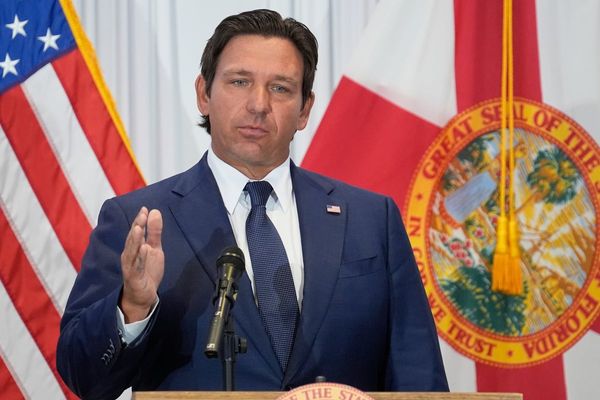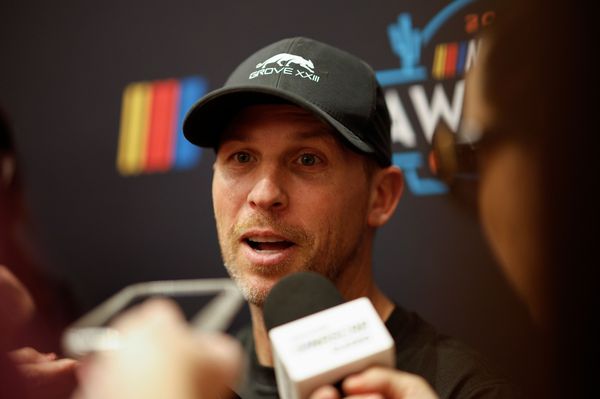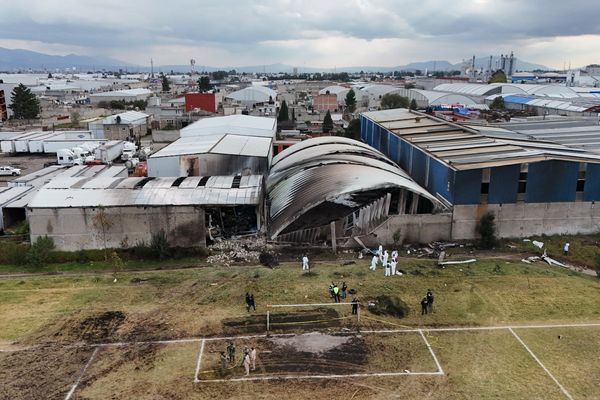
The Coalition’s promise to build seven nuclear power plants starting as soon as 2035 has been met with widespread skepticism by Australia’s energy sector and industry groups, who have warned about the risks of cost blowouts and destroying private sector investment.
AGL Energy and Origin Energy, two of Australia’s largest power producers, also reiterated their concerns about the proposed government intervention.
The opposition leader, Peter Dutton, announced key details of the nuclear policy on Wednesday, including the location of seven proposed nuclear power plants to be owned by the commonwealth government, a similar model to NBN Co and Snowy Hydro.
Frank Calabria, Origin’s chief executive, said time, cost and compatibility would all be challenges of introducing nuclear, particularly if small modular reactors are the starting point. “I don’t think we can see it being scalable for many years, probably well into the next decade,” Calabria told an energy conference on Wednesday.
AGL, which owns two of the proposed seven sites, re-issued comments from March by its chief executive, Damien Nicks, that nuclear energy was not a part of its plans.
“There is no viable schedule for the regulation or development of nuclear energy in Australia and the cost, build time and public opinion are all prohibitive,” Nicks said.
“Policy certainty is important for companies like AGL and ongoing debate on the matter runs the risk of unnecessarily complicating the long-term investment decisions necessary for the energy transition.”
Industry groups offered mixed views, with the mining sector in favour but others demanding details about how much the opposition thought the seven reactors would cost and what interim measures – and costs – might be needed in the meantime since most of the coal-fired power plants are scheduled to close over the next decade.
Getting the states – and the Senate – to overturn bans on nuclear energy added to the uncertainty.
“The Coalition’s vision needs over time to be fleshed out with more detail such as around cost, viability and timelines, especially given the long delays and cost blowouts in delivering nuclear in other western economies,” said Innes Willox, chief executive of national employer association Ai Group.
“With no delivery projected until the middle of the next decade, the proposal does not immediately help with short-term emissions reduction or the cost and reliability of energy in the short term,” Willox said.
“The proposition too that the federal government own and operate the bulk of electricity generation in Australia raises some red flags,” he said. “If it effectively re-nationalises electricity in Australia, there is a risk that private sector investment gets killed off.”
However, Tania Constable, chief executive of the Minerals Council, supported the plans, saying nuclear energy offered industry “a crucial pathway … to reduce emissions cost-effectively while maintaining access to reliable baseload power”.
“Australia’s strong global reputation for non-proliferation and its world-class uranium industry, which includes almost a third of global uranium reserves and supplies around 10% of global uranium used for zero-emissions electricity, positions it well to lead in nuclear energy development,” Constable said.
Kane Thornton, chief executive of the Clean Energy Council, said “building new reactors would take at least 20 years and cost six times more” than renewables.
The policy would “result in much higher power prices and risk the lights going out as coal power stations continue to close,” Thornton said, predicting that no community would want a reactor and to share their “roads with truckloads of nuclear waste”.
Marilyne Crestias, interim chief executive of the Clean Energy Investors Group, said directing resources towards nuclear energy development did not “align with the urgency of transitioning to cleaner energy sources in a timely and cost-efficient manner”.
“Given the immense complexities and expenses involved, venturing into nuclear energy projects in Australia now would fall short of our imperative to decarbonise our economy in a timely and cost-efficient manner,” she said.
The Australian Energy Council, representing the big generators, said “major hurdles” would need to be overcome at both state and federal level, most likely requiring bipartisan support.
Council members were “progressing with investment plans for technologies like battery storage, pumped hydro, renewables and gas-powered generation to replace coal plants that are coming to the end of their technical lives,” said the council interim CEO, Ben Barnes. “Policy stability remains essential for investment decisions.”
Bran Black, the Business Council of Australia’s CEO, welcomed the Coalition’s intention to lift the nuclear energy ban, saying all forms of energy should be considered.
“However, questions still remain how quickly nuclear could realistically be built and what impact it would have on the rollout of renewables and the associated investment decisions that will be required by private capital,” Black said.
Tim Buckley, director of thinktank Climate Energy Finance, said Australians would be paying “a multi-billion dollar ‘nukebuilder’ tax for generations to come by being forced to front the cash for a national buildout of government-owned nuclear reactors”.
“Electricity prices would skyrocket as private investment in new replacement capacity is crowded out, resulting in undersupply for the next 15-25 years while we wait for the LNP’s nuclear white elephants to arrive,” Buckley said.
“The international experience shows that the western nuclear industry is plagued with massive delays and cost blowouts,” Buckley said, noting the Vogtle nuclear power plant expansion in the US blew out to cost $35bn, while Britain’s Hinkley Point C plant has been delayed to 2031 and is on track to cost £33bn pounds ($63bn).
“There is zero reason to expect Australia would be any different when the risks for us are higher, as we have no history of deployment of nuclear energy generation here,” he said.







